
 Copyright © Michael Richmond.
This work is licensed under a Creative Commons License.
Copyright © Michael Richmond.
This work is licensed under a Creative Commons License.
As light passes through Earth's atmosphere, it suffers from extinction and from distortion. Today, let's concentrate on the second effect, in which different light rays are bent by different amounts as they travel through the air.
But first, we'll ask -- how well SHOULD telescopes be able to create images of an object, if there were no distortion by the air?
Light acts like a wave, and is therefore subject to a number of effects -- such as reflection and refraction. One other effect is called diffraction: when light rays pass an obstruction, they interfere with each other in a complicated manner.
For example, if we shine a red laser through a narrow vertical slit onto a distant wall, we see a series of spots, not just one:

Light which shines through a circular aperture, such as the front of a telescope tube, will form an image of a series of concentric rings, sometimes called the Airy pattern.
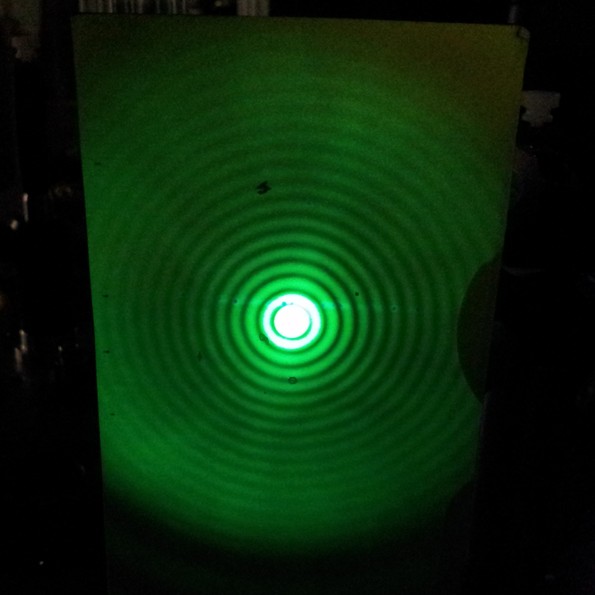
Image courtesy of Anaqreon and Wikipedia
The central portion of this pattern defines the smallest angular detail that one might resolve:
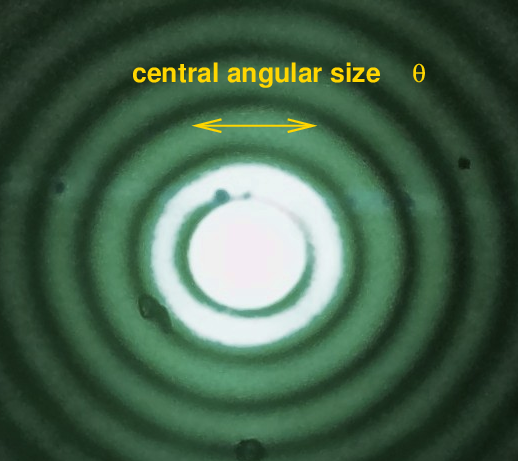
This angular resolution limit can be written in several ways:

where
So, let's check this out.
Q: Which wavelength should yield the sharpest
images?
blue light: wavelength 400 nm
red light: wavelength 700 nm
near-infrared light: wavelength 2000 nm
Q: For green light, of wavelength 550 nm, what is the
diffraction limit for each of these devices?
Express your answer in radians, and in arcseconds.
human eye: 7-mm aperture
RIT: 12-inch aperture
HST: 2.4-meter aperture
Keck: 10-meter aperture
So, in theory, it seems as if a bigger telescope will always yield a much sharper image. And that may be true in a vacuum ... but we live at the bottom of an ocean of air.
As light makes its way through the Earth's atmosphere, it passes through many different layers of air. Each layer has a slightly different temperature, pressure and density; there may also be slight differences in chemical composition, dust and water content. That means that the index of refraction of each layer is a little different. As ray of light travels from layer to layer, it is bent by slightly different angles. By the time it reaches the ground, the ray has probably shifted to a slightly different position than it would have had in the absence of an atmosphere:
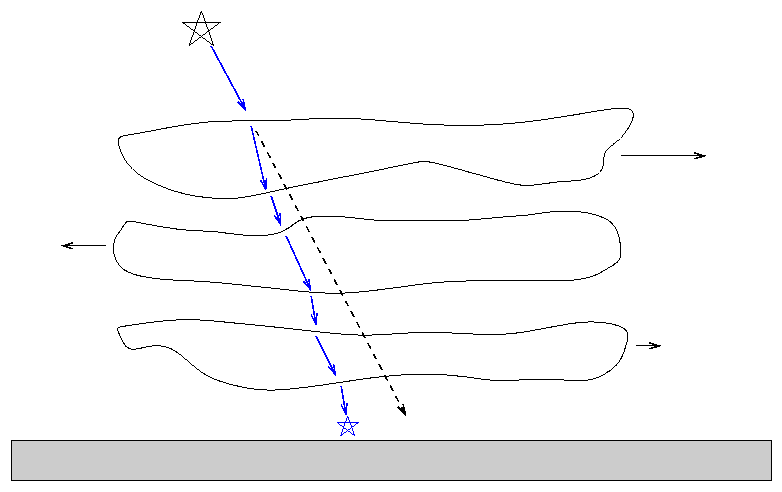
The atmosphere is constantly in motion, with air at different altitudes moving in different directions at a range of speeds. Light rays passing through the layers are refracted by constantly changing amounts. On timescales of tens of milliseconds, the apparent position of each light ray will change by fractions of an arcsecond ...
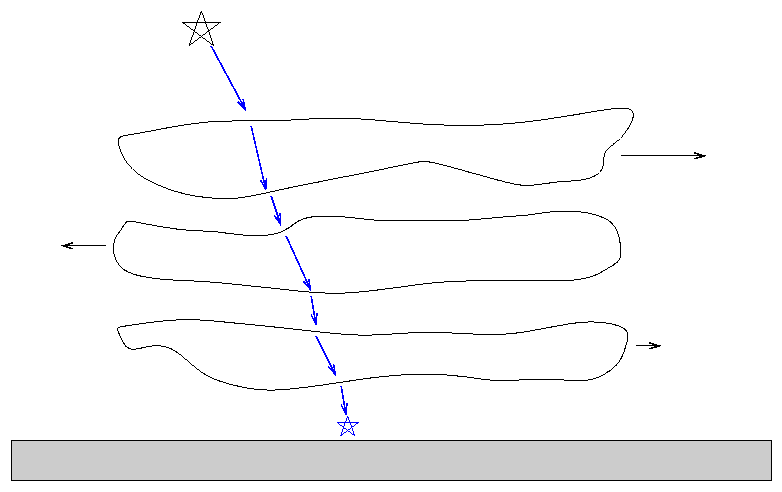
and if one adds up many light rays, the result is a dancing blur:
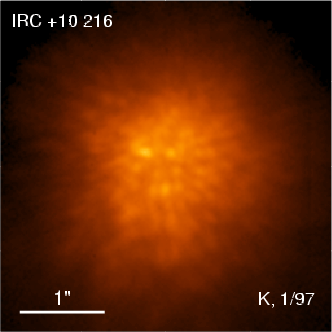
The picture above was taken with a 6-meter telescope.
Q: What is the diffraction limit of this telescope
for near-infrared light of wavelength 2000 nm?
Express your result in arcseconds.
Q: What is the ACTUAL angular size of this
dancing blur? Express your result in arcseconds.
Astronomers use the term seeing to refer to the amount of blurring caused by the Earth's atmosphere. For most places on Earth, the seeing is typically around 1 arcsecond. Maybe a bit better on mountaintops, definitely a bit worse at RIT (more like 3-4 arcseconds), but that's a typical value.
No matter how big your telescope is, if you are observing from the ground, you're stuck with images no sharper than about 1 arcsecond.
Or are you?
When fast-acting cameras, and faster-acting computers, were developed in the 1970s and 1980s, some astronomers began to think about ways to get around the blurring effects of the atmosphere. They have developed several approaches to the problem, but all are given the name adaptive optics.
The basic idea sounds pretty simple:
Click on the picture below to see the idea in action.
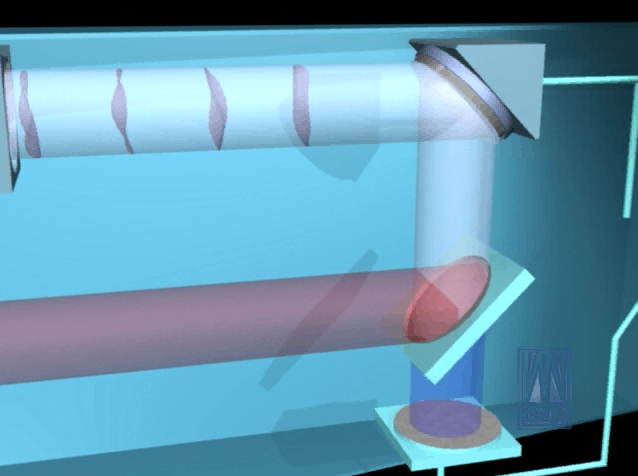
The first thing one needs is a "fast camera", because the motion of the air changes the distortion of light rays many times each second. Typical "fast cameras" run at video rate -- 30 times per second -- or even faster; some take over 1000 frames per second!
What sort of thing is an active optical element? There are several different types, but most are basically flexible mirrors with lots of little actuators to bend them. Some are small:

and others are large:
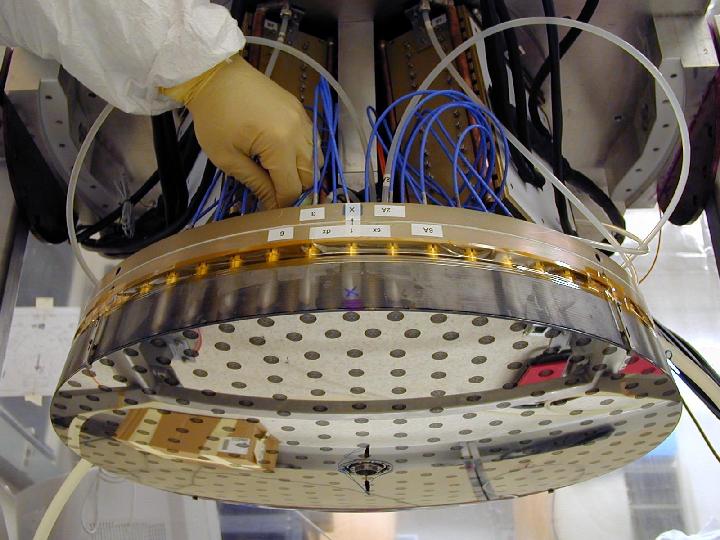
Secondary mirror on the MMT, from
a talk by Laird Close
How well can these systems correct the air's distortions? Pretty darn well! It turns out to be easier for light of long wavelengths, in the near-infrared portion of the spectrum. Let's look at one example, taken with the MMT, a telescope of diameter roughly D = 6.5 meters, at a wavelength of λ = 1650 nm.
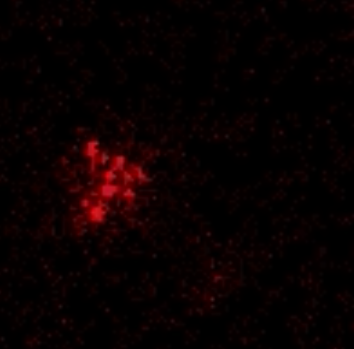
Q: If D 6.5 meters, and λ = 1650 nm, then what
is the theoretical diffraction limit?
Express your result in arcseconds.
Okay, let's compare that to the actual performance:
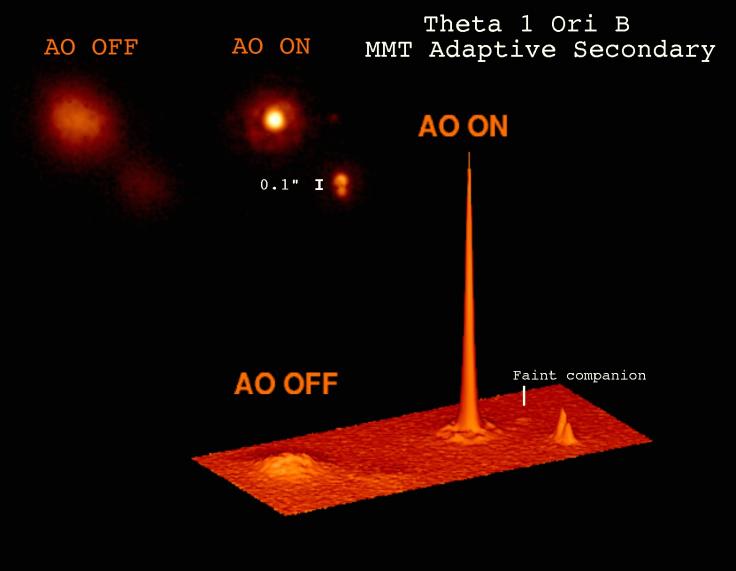
In just the last year or two, some astronomers have managed to use adaptive optics to improve images in the optical regime, at wavelengths we can see with our own eyes.
 Copyright © Michael Richmond.
This work is licensed under a Creative Commons License.
Copyright © Michael Richmond.
This work is licensed under a Creative Commons License.